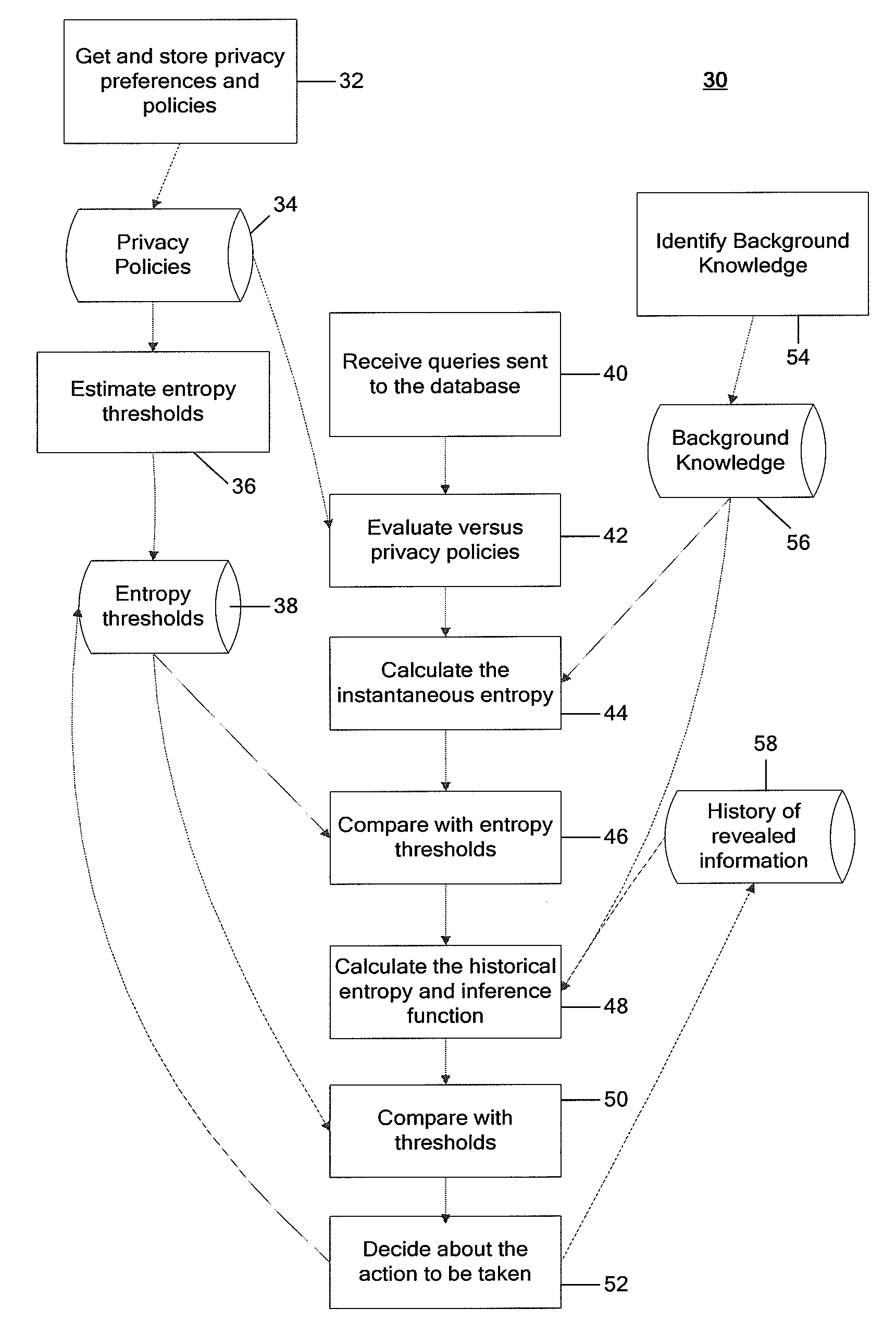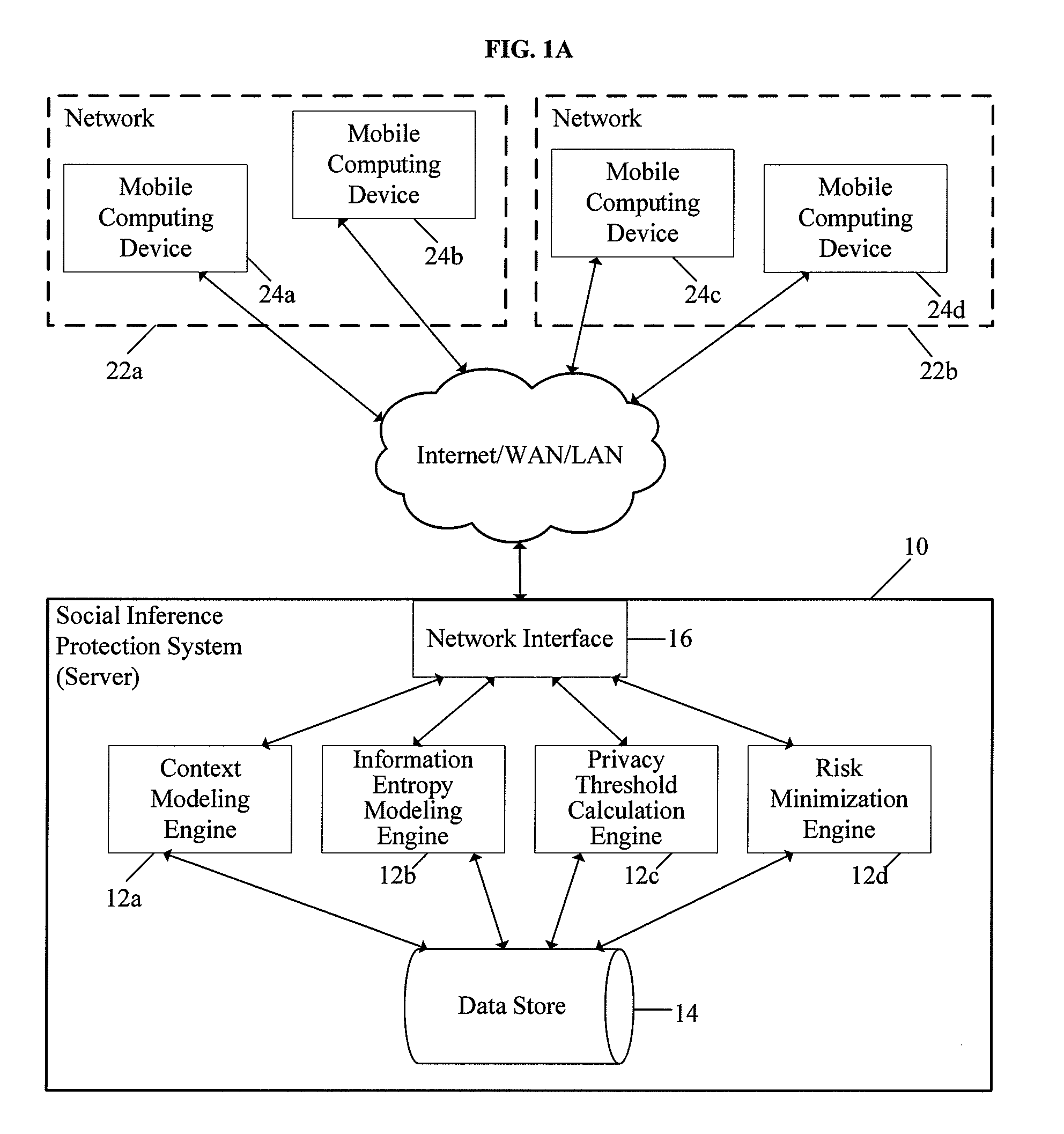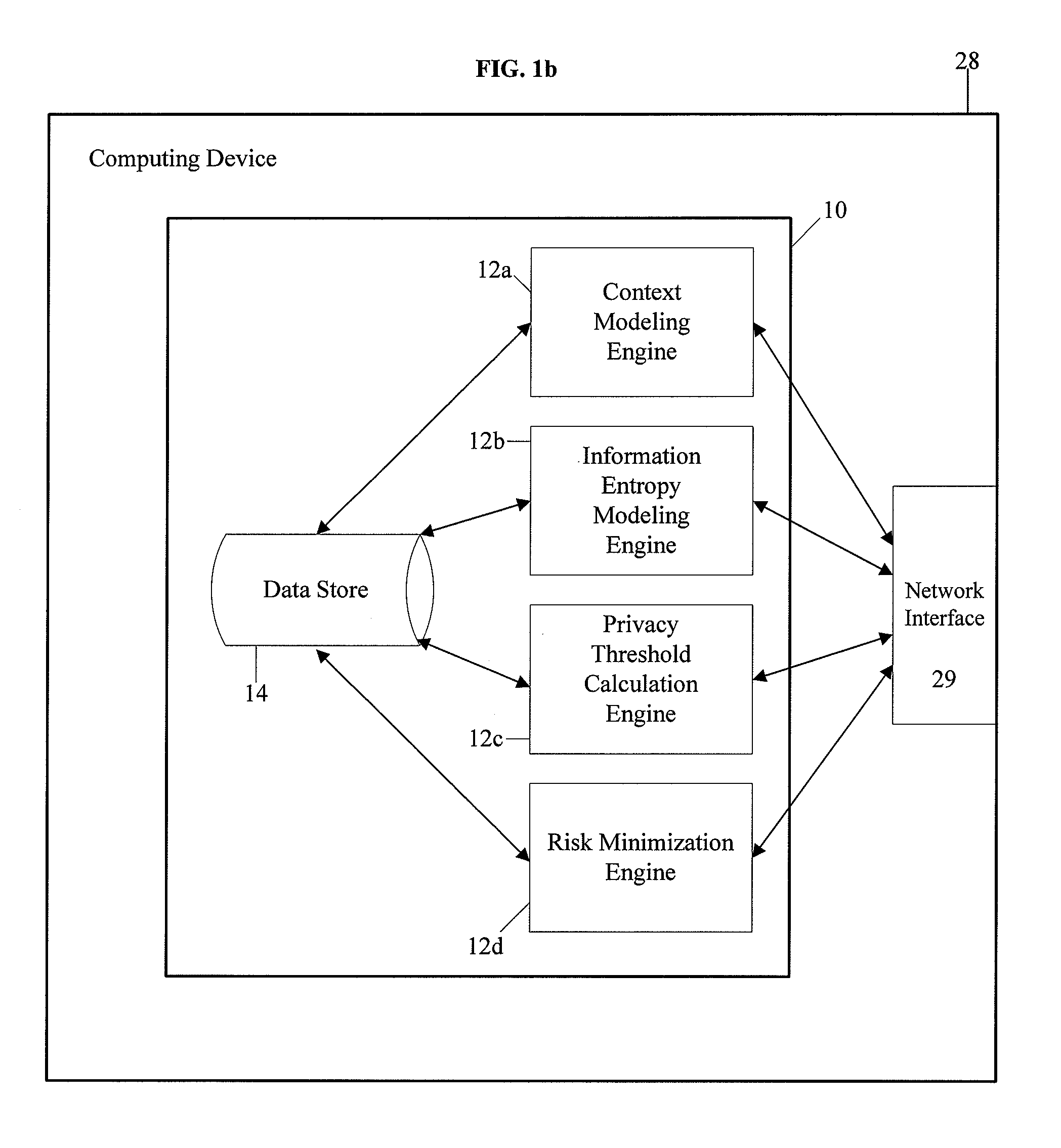System and Method for Protecting User Privacy Using Social Inference Protection Techniques
a technology of user privacy and protection techniques, applied in the field of system and method for protecting user privacy using social inference protection techniques, can solve the problems of ensuring that data will not be used, avoiding unnecessary use, and avoiding unnecessary use, so as to minimize privacy risks, prevent unwanted exchange, and minimize privacy risks
- Summary
- Abstract
- Description
- Claims
- Application Information
AI Technical Summary
Benefits of technology
Problems solved by technology
Method used
Image
Examples
Embodiment Construction
[0075]The present invention relates to social inference protection systems and methods, as discussed in detail below with reference to FIGS. 1-11.
[0076]FIG. 1A is a diagram showing hardware and software components of the social inference protection system of the present invention, indicated generally at 10, implemented in a client / server environment. As will be discussed in greater detail below, the present invention could be implemented on a server forming part of a client / server environment, or as a standalone software application executing on a computing device forming part of a network.
[0077]As shown, the system 10 could be implemented on a computer system (server) in communication with a network 20 (which could include the Internet, a local area network (LAN), wide area network (WAN), metropolitan area network (MAN), etc.), and could include a plurality of software modules 12a-12d executed by the system 10, a central data store 14 accessible by the software modules 12a-12d, and...
PUM
 Login to View More
Login to View More Abstract
Description
Claims
Application Information
 Login to View More
Login to View More - R&D
- Intellectual Property
- Life Sciences
- Materials
- Tech Scout
- Unparalleled Data Quality
- Higher Quality Content
- 60% Fewer Hallucinations
Browse by: Latest US Patents, China's latest patents, Technical Efficacy Thesaurus, Application Domain, Technology Topic, Popular Technical Reports.
© 2025 PatSnap. All rights reserved.Legal|Privacy policy|Modern Slavery Act Transparency Statement|Sitemap|About US| Contact US: help@patsnap.com



